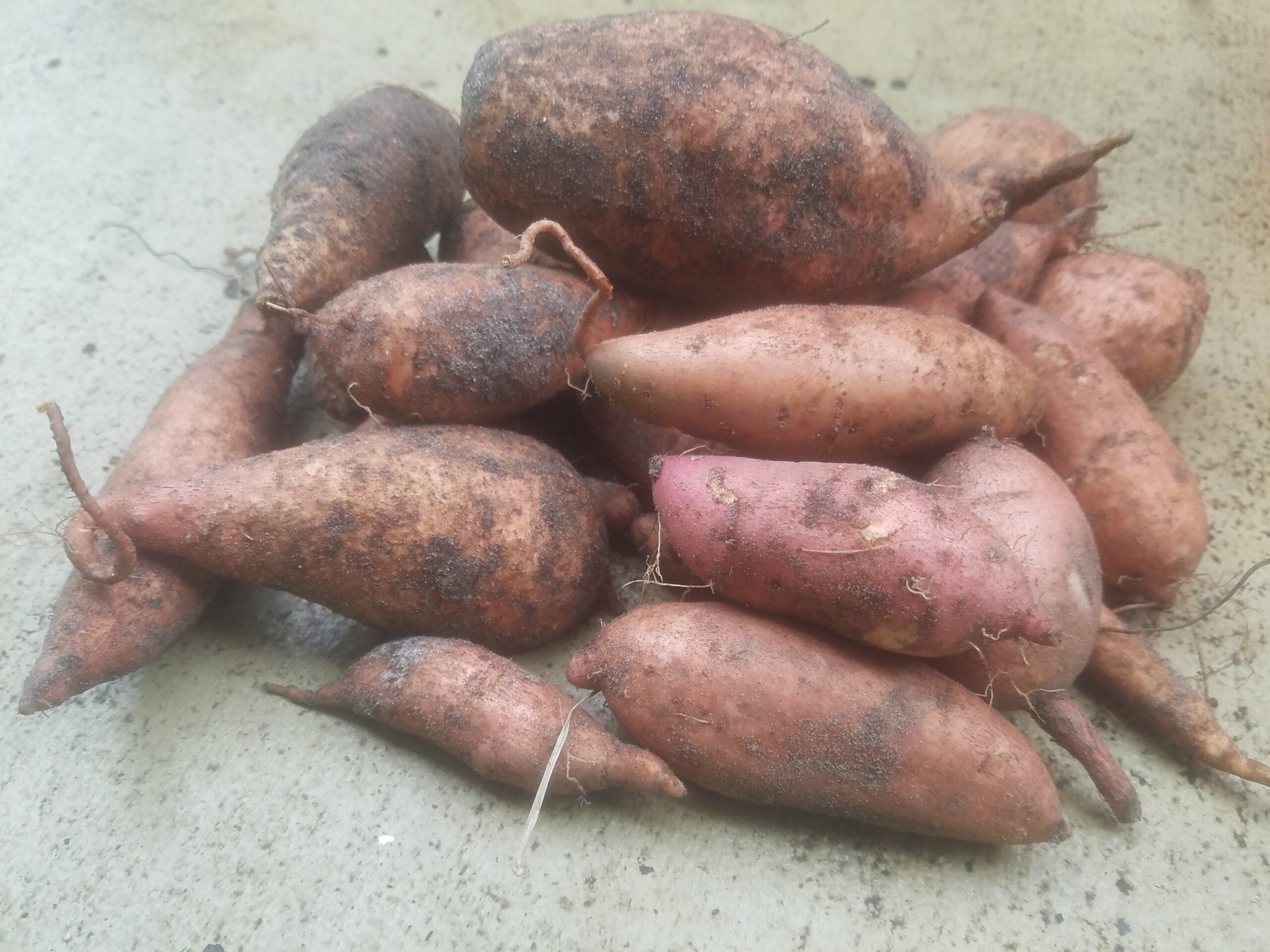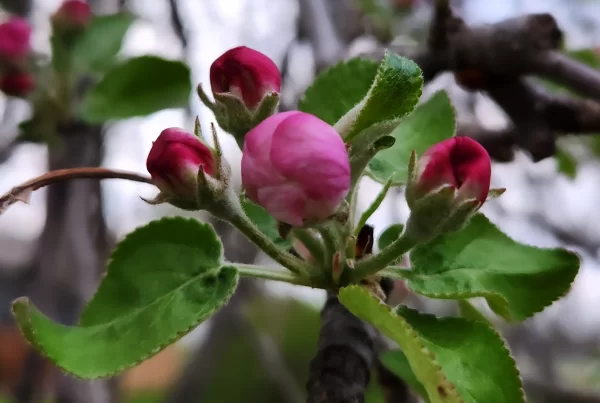If you have ever considered growing sweet potatoes, this post is for you!
We love potatoes
Have you ever not intended to grow something, but ended up growing it anyway because opportunity presented itself? Well, that is what happened with my first crop of sweet potatoes. Let me explain.
My family loves potatoes of all kinds. Prior to moving to Florida, we ate them multiple times a week, as a delicious and cheap form of nutrition. In addition to simply being delicious, research suggests that sweet potatoes may possess anti-cancer properties. However, we discovered that potatoes were significantly more expensive here than up north. Rather than eat fewer potatoes or spend more money, we decided to purchase large quantities (think 100 lbs or more) every time we went north to visit friends or family.
This strategy worked well in the fall/winter when temperatures were relatively cool. This strategy did not work well in the spring as temperatures began to warm up, however. One evening I found the majority of a 40 lb box of sweet potatoes had sprouted overnight. I cut off and composted the sprouts at first (while still using the potato underneath), but these potatoes kept sprouting like crazy.
Planting sweet potatoes
I had read that sweet potatoes grew well in Florida, so I cut off pieces of the potatoes attached to the sprouts and threw them in the dirt. Okay, it wasn’t quite that easy. The small bed in the picture below was previously full of 3″ or so of river rocks. What actually happened was I somehow convinced Mr. Grump to help me pick rocks out of this bed and throw them elsewhere in our yard. This took at least 4 hours of labor for each of us, probably more (we weren’t counting). Then, after adding a layer of top soil (purchased from the store) and loosening the dirt a bit, we planted the sweet potatoes (and a few beans, as you can see). The real winner here was the agave, who stabbed me in the leg multiple times.
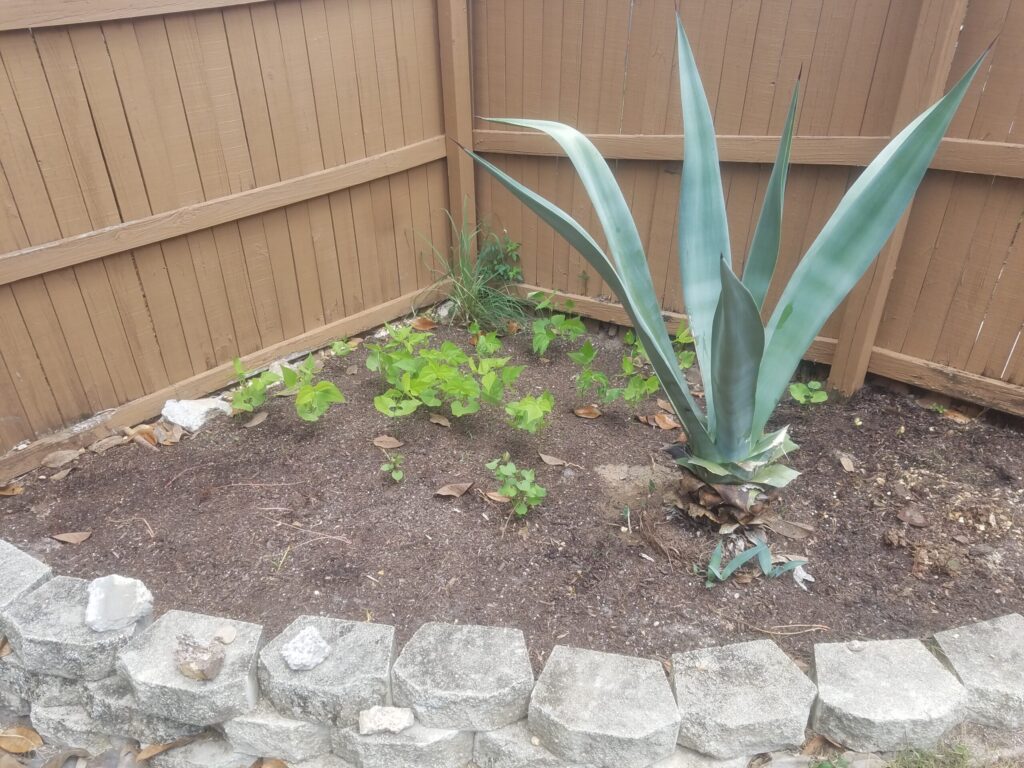
To my amazement, the majority of the sweet potato slips took and began growing vigorously. This inspired me to plant an additional garden of sweet potatoes, as we still had plenty of volunteers in the giant box in the garage. Mr. Grump was absolutely thrilled when I chose the garden on the opposite side of the yard. Thanks to the property’s previous owner’s apparent fascination with river rocks, this bed was also full of approximately 3″ of them. Fortunately, this bed did not contain a vicious agave plant to attack us as we labored. After several hours of hard work, we threw more sweet potato slips in the dirt, and they took well also.
Growing sweet potatoes in a square foot bed
This success made me realize that we could plant even more of our box of sweet potatoes and have an even bigger harvest. Maybe we could stop smuggling potatoes from up north! Mr. Grump had no desire to spend another weekend picking up rocks. He suggested that we make a square foot bed for the rest. We simply cut four eight-foot 2″x8″ boards in half and stacked them double high to create a 4’x4′ bed. Then we added nailed lightweight rope at foot intervals to give us a nice visual of each square foot of the bed (see picture below).
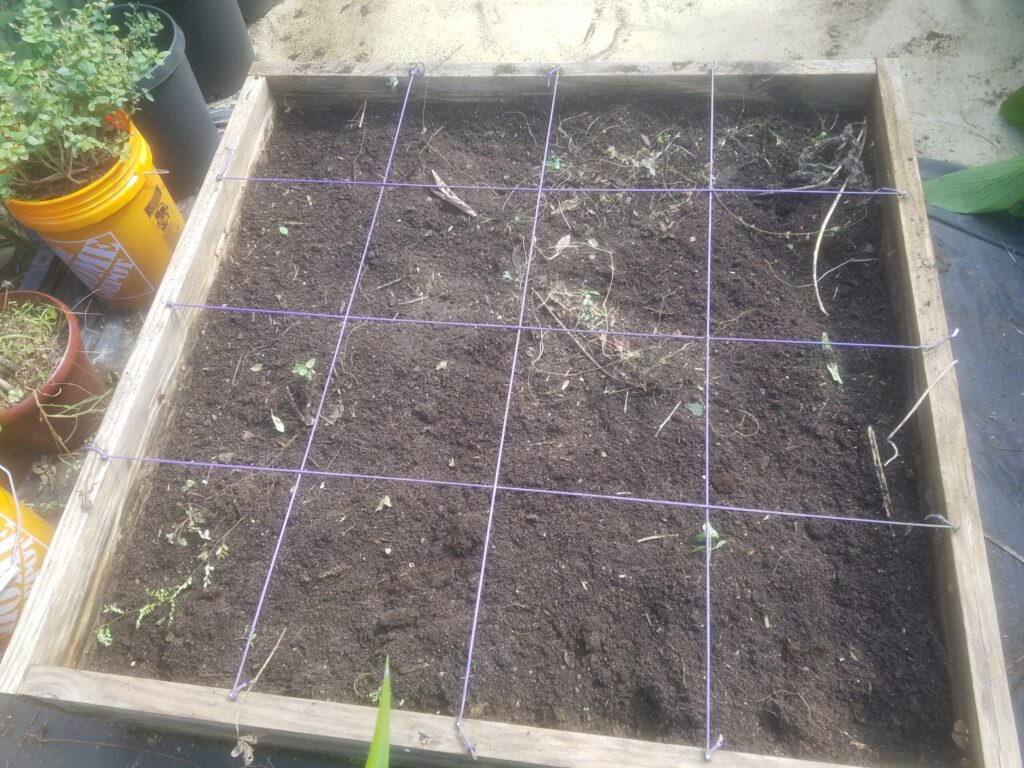
7 Tips for growing sweet potatoes
This past weekend I had the pleasure of digging up the sweet potatoes and was thrilled to find that most plants had produced multiple potatoes. Here are my takeaways from this experience:
- Don’t be afraid to use slips from grocery store potatoes if you aren’t looking for fancy varieties. Mine worked well and for a fraction of the price that I would have paid had I sought out slips from a nursery.
- If you choose to plant in the ground, loosen up the soil first to allow large potatoes to grow. Potatoes that stay at ground level may end up green and inedible.
- Although potatoes in better quality soil in my container garden were slightly bigger in size, on average, the sandy soil in my yard also produced some decently-sized potatoes.
- Sweet potato plants are vining in nature, so plan accordingly with space. They will grow horizontally or vertically, all over your lawn, or up and over your neighbor’s fence if you let them.
- If there are spiky plants near your vegetable garden, you may wish to relocate them to avoid multiple injuries.
- Sweet potato leaves are delicious and can be eaten like most other edible greens.
- Make sure to let sweet potatoes cure or sit for a couple weeks before eating them. Otherwise their bland taste will seriously disappoint your taste buds.
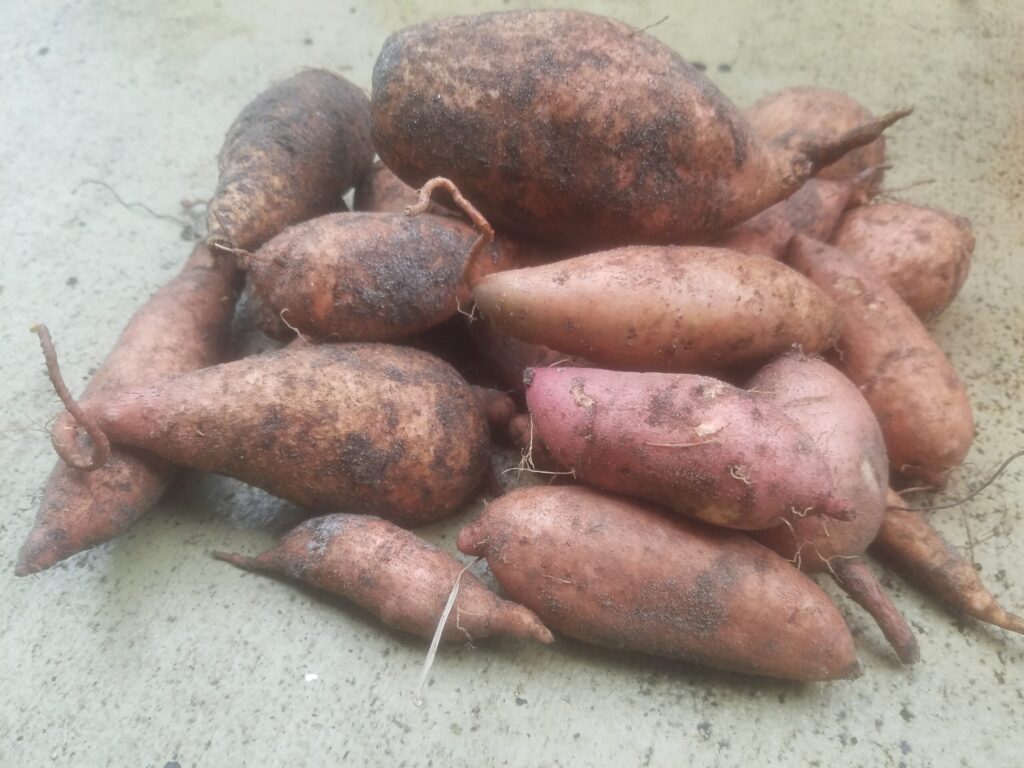
Happy potato eating! Feel free to leave a comment if you have any tips for great sweet potatoes!
For another easy, heat-tolerant crop, click here to learn about growing turmeric!

